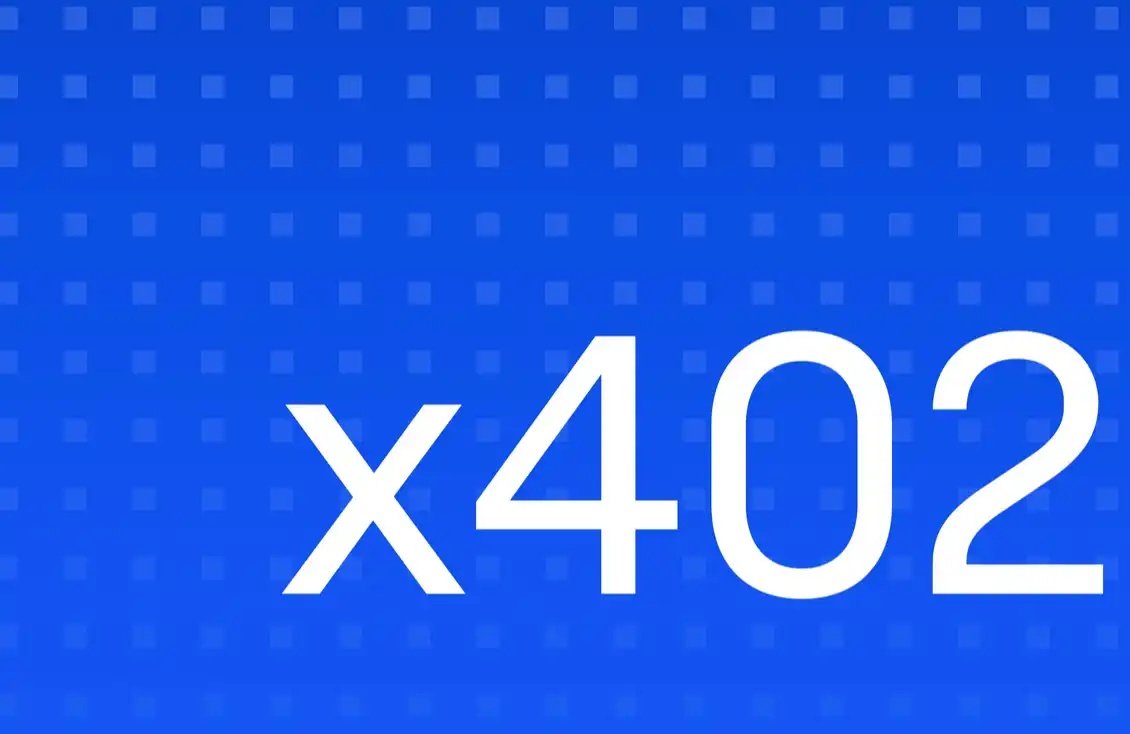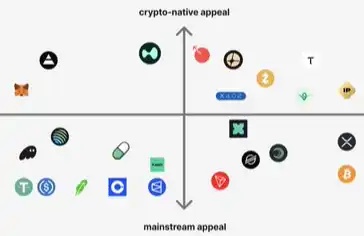As the mainnet launch approaches, how do you view the prospects of the Monad ecosystem?
Original author: Peter Schöllauf
Original translation: TechFlow
Monad Ecosystem
Since the Monad blockchain has not yet been launched on the mainnet, its ecosystem is still developing. As of February 2024, more than 80 independent protocols and dApps have committed to building on the protocol. As the mainnet launch date approaches, this number is expected to be closer to 150 or 200.

One of the earliest major players to integrate with Monad is LayerZero, an industry-leading protocol designed to enable cross-platform messaging and cross-chain interoperability of various chain and system types. LayerZero's integration with Monad will allow seamless interconnection with 50 to 60 (and growing) of the most well-known blockchains in the field.
In addition, the integration will allow data to be sent to Monad via the LayerZero endpoint for use cases related to governance voting, loan contract calls, arbitrary data exchange, and more. The integration will also allow ERC-20 and native Gas tokens to be exchanged as wrapped assets on Monad, while more utility tools connected to LayerZero will be released in the coming months.

The Monad-LayerZero collaboration marks an important milestone for both projects, helping to ease the cross-chain interoperability challenges that exist in today's current blockchain landscape.
Significantly, Monad also recently announced a partnership with Pyth Network. This will allow Pyth to use Monad's highly scalable, low-gas design to provide more reliable price data. Note that more frequent price feed updates mean more accurate data, which in turn means more efficient DeFi.
Some of the other protocols being built on the network include:
Orderly Network: A cross-chain liquidity layer and DEX front-end deployment platform
Pike Finance: A cross-chain lending platform and decentralized money market
Switchboard Oracles: A decentralized oracle network allowing for verifiable randomness, functionality, and price feeds
In addition, Monad has recently welcomed multiple other projects to the ecosystem, including Notifi Network (a notification and customer engagement infrastructure layer), Swaap Finance (a non-custodial interoperable market-making infrastructure), Catalyst (an interoperability protocol for cross-chain AMMs), Wombat Exchange (a multi-chain cross-chain unilateral DEX), TimeSwap Labs (an oracle-free lending protocol for creating ERC-20 money markets), and Aori (a high-performance order book protocol).
In addition, projects such as Dyson Finance (a DEX that allows retail investors to seamlessly provide liquidity), Ambient Finance (a DEX for diversified stable liquidity), AIT Protocol (an AI data platform with a train-to-earn model), ACryptoS (a DEX, yield flow staking platform, and decentralized money market), and Monadians (a Monad-focused NFT collectibles) are other projects that have collaborated with Monad in recent months.
In addition, Monad recently announced that it will integrate with the Wormhole cross-chain interoperability and bridging protocol to enable powerful connections with multiple blockchains such as Solana. Monad’s partnership with Wormhole enables Monad to unlock cross-chain interoperability with multiple blockchains connected to the Wormhole ecosystem.

Roadmap and Future Plans
· February 2022: Monad is founded in New York City
· February 2023: Monad receives $19 million in funding from several leading cryptocurrency VCs
· September 2023: Monad documentation is released, detailing the architecture of the Monad blockchain for the first time
· Late 2024 or early 2025: Monad mainnet launch
While Monad’s protocol has not yet been launched on mainnet, it’s difficult to determine its exact roadmap for the future. Nonetheless, the platform will likely launch its mainnet by the end of 2024, meaning its direction will be clearer by then.

Comparative Analysis
Monad is a Layer 1 smart contract platform that is designed to be extremely scalable. In fact, many speculate that it will be the most scalable platform released in the next 18-24 months, with technology comparable to industry giants such as Solana.
Nevertheless, as a network with a wide reach like Solana, demonstrating extremely high Total Value Locked (TVL) as well as a large user base, it is not as scalable as a new platform like Monad, which has yet to launch on mainnet. There is no doubt that once Monad launches, it will quickly expand its user base, but it still has a long way to go in terms of real-world adoption.
One feature that sets Monad apart from many other fast chains is that it combines parallel execution (similar to Aptos, Sui, Solana, etc.) with EVM compatibility. Aptos, Sui, Solana, and others demonstrate parallel execution but are not Ethereum-compatible, meaning it will remain an ongoing challenge for developers to port their iterations on these networks.
Solana
According to many blockchain experts, Solana is perhaps the most scalable blockchain in existence today. However, Monad’s ultimate hope is to match or even surpass Solana in terms of network scalability and transaction throughput.

Many believe that Solana is the clear industry leader in terms of speed and scalability, while also being one of the most widely used platforms in the blockchain space. Despite this, many believe that its design is quite centralized compared to other platforms like Monad.
Solana utilizes a Proof-of-Stake (PoS)-based consensus mechanism called Tower BFT, which leverages an enhanced version of Practical Byzantine Fault Tolerance (PBFT), combined with a clock-based timing mechanism called Proof-of-History (PoH) that reduces message transmission overhead and latency.
The platform also utilizes Sealevel, a parallel execution framework designed to continuously modify smart contracts through a system to ensure that they operate at ultra-high speeds.
Solana is able to confirm blocks in 0.4 seconds and is scalable to 65,000 transactions per second (TPS), with transaction costs typically being just a fraction of a cent. Additionally, Solana is about to launch Firedancer, a specialized validator setup infrastructure that some believe will enable the network to handle up to a million TPS. However, this remains to be seen.
One of Solana’s biggest weaknesses is the lack of Ethereum Virtual Machine (EVM) compatibility and the inability for developers to create Ethereum smart contracts using Solidity. While Solidity development on Solana is not possible, it is able to support Ethereum dApps via the Wormhole bridge. However, the fact remains that Monad has a clear advantage in this regard due to its full EVM framework.
Near

NEAR is considered by many to be one of the highest throughput chains in the blockchain space, with a finality time of 1 second and lower transaction costs than most competitors.
NEAR Protocol is a Proof-of-Stake (PoS) blockchain that is conceptually a community-operated cloud computing platform. NEAR leverages sharding and other technical innovations to significantly increase the network’s transaction throughput.
Once its proprietary Nightshade sharding infrastructure is fully developed, NEAR claims to be able to process at least 100,000 transactions per second.
A major competitor to Hedera Hashgraph, Monad, Avalanche, Solana, and others, NEAR defines its platform as an extremely fast, energy-efficient, secure, and adaptable blockchain designed for enterprise applications and DeFi, as well as a range of other utilities.
To enable this functionality, NEAR helped build Aurora, its EVM-compatible development framework, and Octopus Network, its interoperability framework; as well as Rainbow Bridge, as a means of sending assets between Ethereum, Aurora, and NEAR. Despite having Aurora integrated, NEAR itself is not compatible with Ethereum.
Similar to how MacOs, Windows, and Linux made computers easy to use, NEAR recently launched its Blockchain Operating System (BOS) as a framework that allows developers to build and use decentralized front-end applications on any blockchain network.
Despite these innovations, Monad uses pipelining in an EVM-compatible environment, which NEAR does not. This technology alone has the potential to eventually surpass other platforms like NEAR in decentralization, network throughput, and scalability.
Other Highly Scalable Networks
Chains that are compatible with Ethereum and focus on scalability include Avalanche, BNB Smart Chain, Fantom, Injective Protocol, and the emerging Sei Network and Shardeum. Although it can be largely argued that these chains do not have the efficiency presented by Monad in terms of scalability, decentralization, and EVM compatibility.
Other blockchains that claim to be highly scalable include Ripple, Stellar, Algorand, Kadena, Aptos, Sui, MultiversX, and Cardano.
In addition, some have hypothesized that Ethereum could eventually handle transaction volumes in excess of 100,000 TPS once its sharding capabilities are fully implemented. However, the fact remains that this has not yet been proven, and the sheer size of the network may make it difficult to achieve.
Many experts also believe that Ethereum’s infrastructure is old and very difficult to modify, which means it is not realistically able to keep up with the scalability of more recently developed chains. Again, time will tell if the Ethereum network can overcome these challenges in the long term.
Analyzing Monad’s Future Potential
Despite being very new, Monad represents a blockchain with very high long-term potential. Its combination of decentralization, extreme scalability, and compatibility with Ethereum makes it a disruptor in the blockchain space. Specifically, its parallel execution and superscalar pipelining frameworks, along with other cutting-edge innovations, put Monad in a strong position technologically.
Monad’s ability to reach 10,000 transactions per second is an extremely strong benchmark compared to many currently existing chains. Because 10,000 transactions per second is the starting point for the network, Monad could theoretically scale to hundreds of thousands of TPS in the coming years.
Nevertheless, Monad faces a difficult adoption challenge to gain significant market share among large, established competitors in its first year or two of development.
Instead, the platform has already established strong foundational partnerships with strong partners such as LayerZero, Pyth Network, Wormhole, etc., suggesting that its 80+ ecosystem will grow significantly over time, with an estimated 150 projects expected to be built on the platform at mainnet launch.
However, the launch of many large Layer 2 platforms in the first half of 2024 (plus many existing Layer 2s) may mean that many Layer 1 platforms will face difficulties in gaining adoption.
Regardless, it is clear that Monad has the potential to be an industry-changing blockchain for creating decentralized high-performance trading platforms, trading systems, and various utilities.
Original link
Welcome to join the official BlockBeats community:
Telegram Subscription Group: https://t.me/theblockbeats
Telegram Discussion Group: https://t.me/BlockBeats_App
Official Twitter Account: https://twitter.com/BlockBeatsAsia


 Forum
Forum Finance
Finance
 Specials
Specials
 On-chain Eco
On-chain Eco
 Entry
Entry
 Podcasts
Podcasts
 Activities
Activities
 OPRR
OPRR








